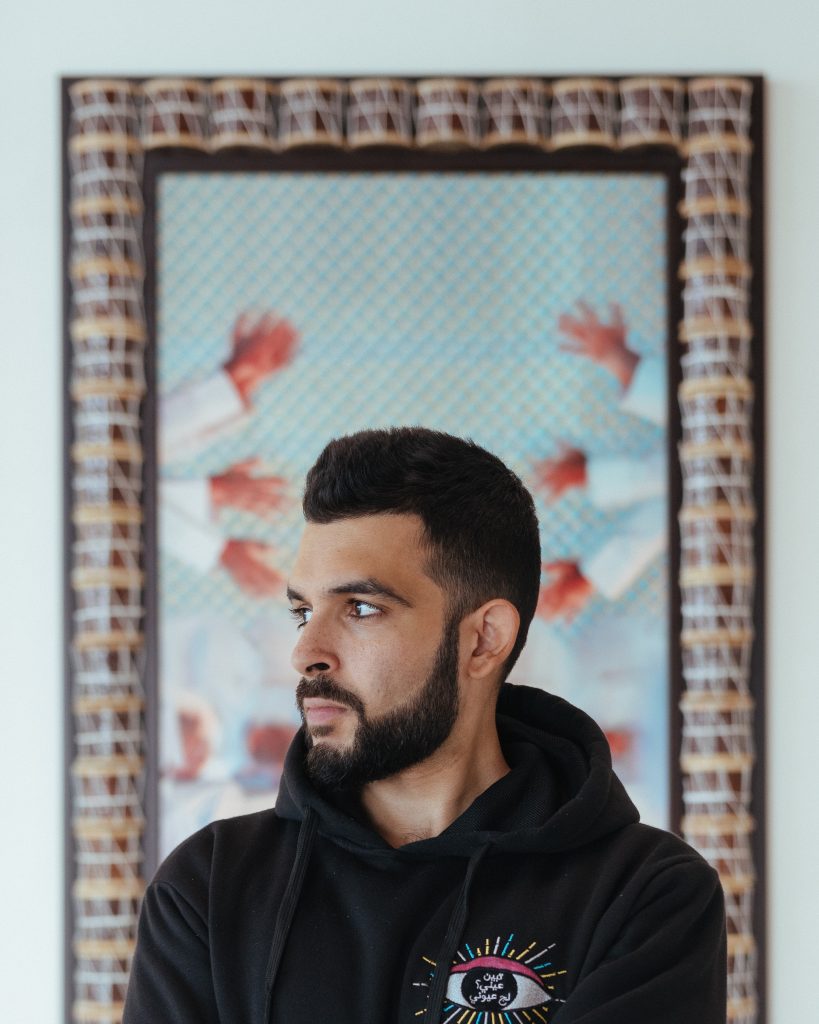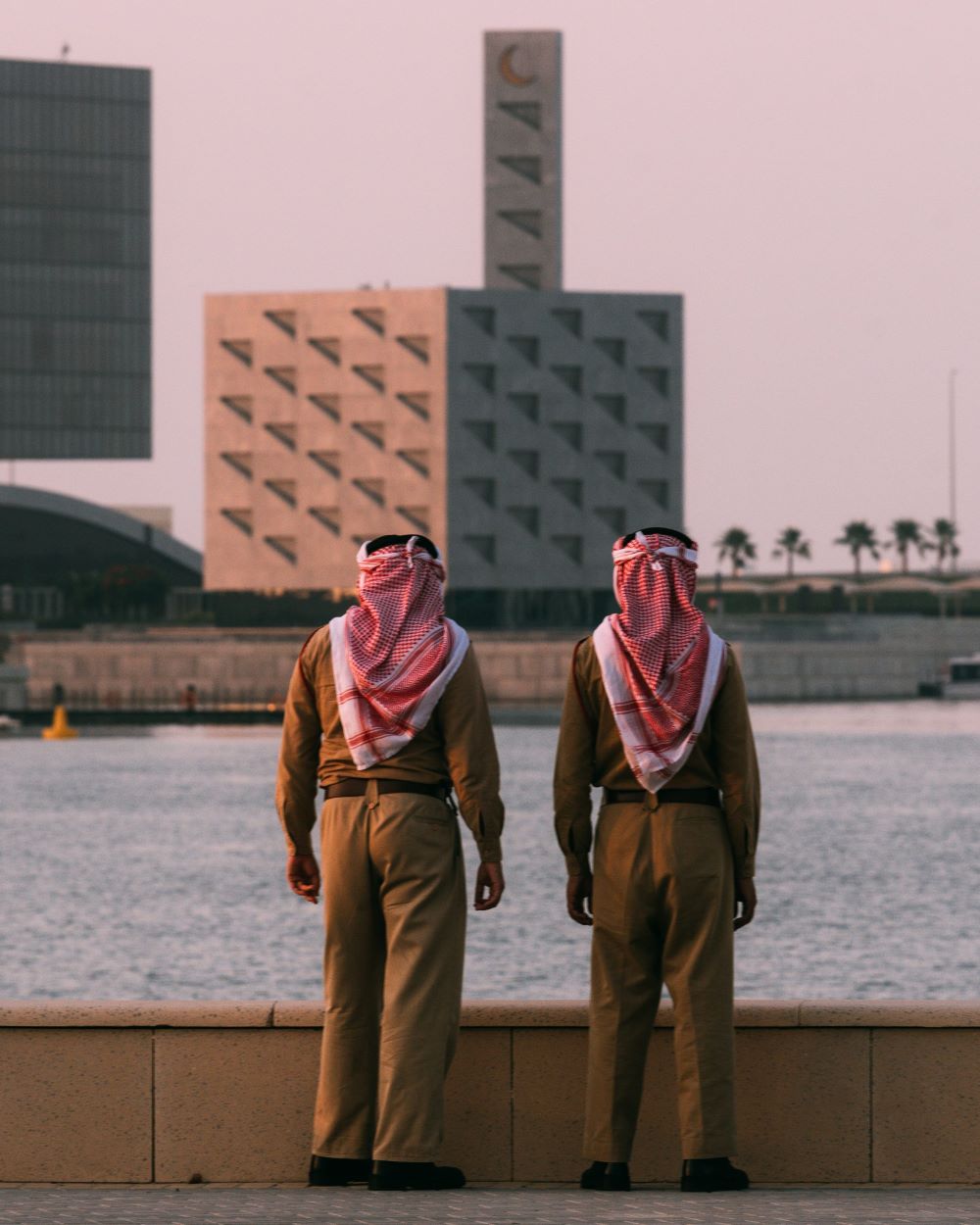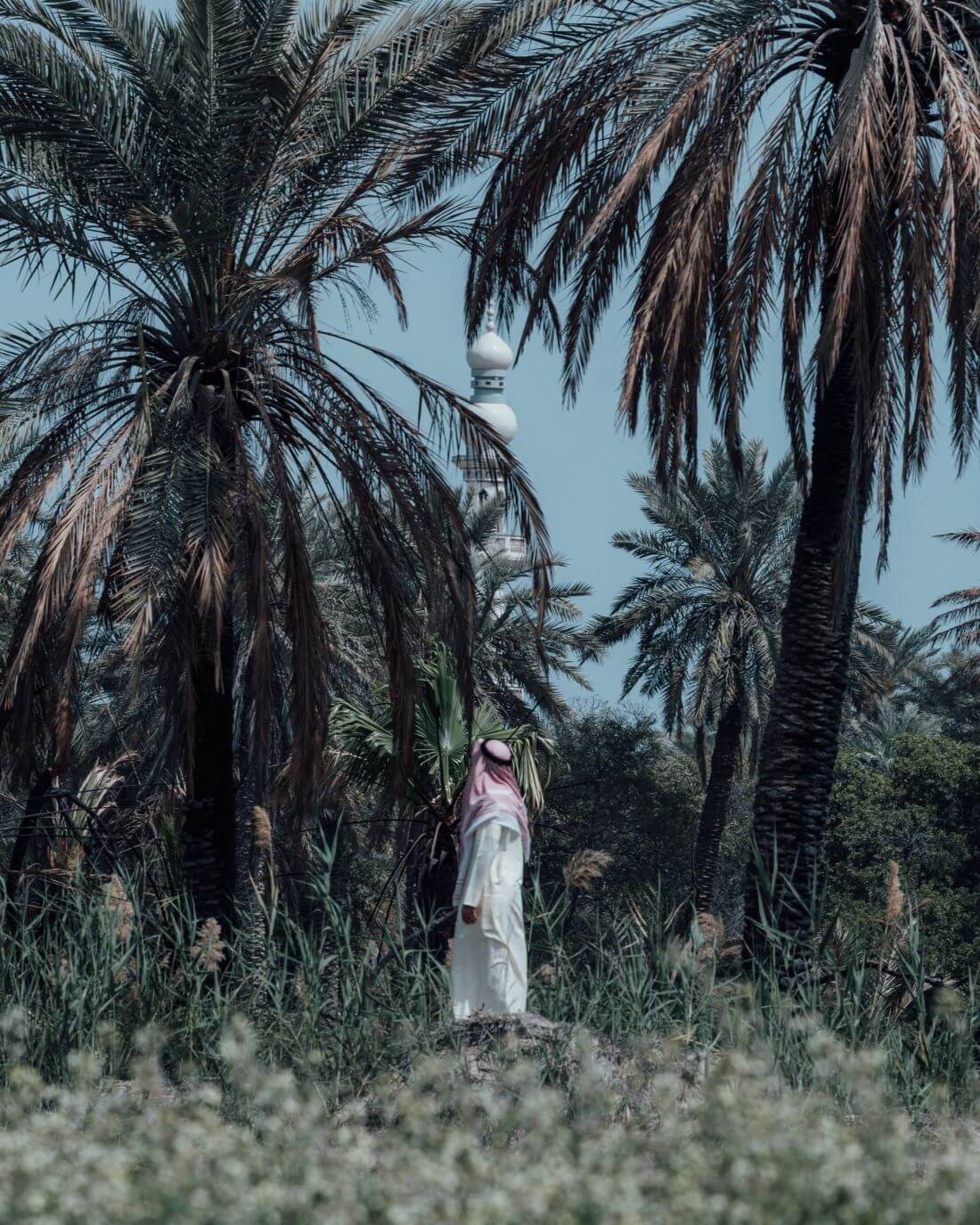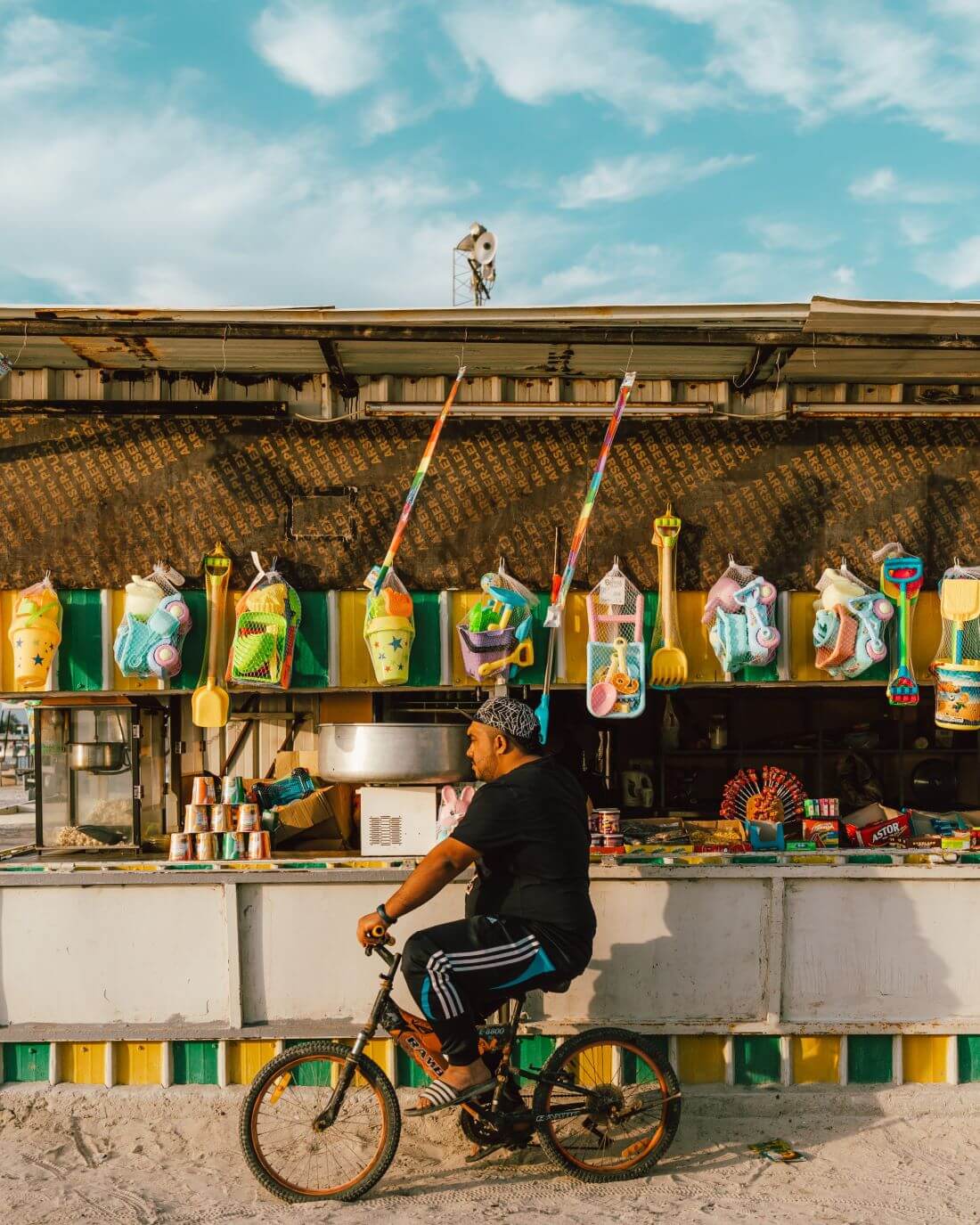
 In Perspective: Ishaq Madan
In Perspective: Ishaq Madan
Bahraini photographer Ishaq Madan talks to Elina Sairanen about his career, stylistic developments with regards to his practice and shares insights for aspiring photographers and creatives. Ishaq is currently part of the Khaleejiness group exhibition at the Photography Studio at Manarat Al Saadiyat in Abu Dhabi organised in collaboration with SWALIF Publishing House. The exhibition closes on 10 February 2022.


Elina Sairanen: Hello Ishaq, it’s great to meet you! Could you begin by introducing yourself?
Ishaq Madan: My name is Ishaq Madan and I am a self-taught photographer, having practised around eight years now. My style is influenced by street photography and most of my work incorporates elements from that. I like to include natural elements in my work and capture things in a more cohesive and transformational way. Street photography has helped me build up the way I photograph things and it has also helped me to pay attention to the mundane things we normally take for granted.
ES: Considering this background in street photography, how did you then transition into a more established fine arts type of a practice with shoots that are more planned for instance as opposed to shooting more randomly or in the moment?
IM: I try to translate inspiration or something that I experienced personally into a more conceptual, contemporary style of work. For instance, the latest work I did for Manarat Al Saadiyat was inspired by something I went through in middle school.


ES: Could you tell us more about how your career developed? After you started shooting, did you post your images on Instagram or was there some other platform?
IM: Yes, Instagram was the number one place back in the days in terms of getting your work out there and getting discovered. Now, the reality is quite different as it is quite saturated. It’s a lot more difficult nowadays than it was ten years ago. When I started, I shared my work consistently, almost on a daily basis. I think the key as a photographer or any artist for that matter is to be consistent. At the same time, there were numerous calls for exhibitions, so I tried my luck and applied for different things. Slowly, as I was laying the foundation, I became discovered by different curators and the rest just bloomed from that.
ES: What was your first ‘significant’ project?
IM: In 2018, I had an exhibition at the Bahrain Exhibition Centre called Art Bahrain Across Borders. I had a series of three conceptual photographs with street photography elements in the show, and the series was sold to a private collector. After that I realised that my work is indeed going somewhere – that I am progressing, in a way. The whole experience helped me spirit further.


ES: In a previous interview, you stated that your inspiration is heavily ‘drawn from your desire to bridge the gap between Bahrain and the world through visual stories’. Could you elaborate more on this gap that you’ve identified?
IM: It derives from the lack of knowledge and awareness on Bahrain. Throughout the years, I’ve travelled quite a bit and abroad you rarely hear anything about Bahrain or see any Bahraini art on an international level. People don’t necessarily know where Bahrain is located or they confuse it with Dubai. All these encounters and experiences with foreigners outside of Bahrain have made me realise that there’s quite a considerable gap in people’s knowledge and awareness on our tiny island. As a Bahraini, I want to share my world, my country with the world, and that’s really how the realisation came about.
ES: Right. Photography is an ideal medium for that, surely. In this same interview, you also highlight the concept of ‘sonder’. Why is it central to your practice?
IM: The concept of ‘sonder’ is dear to me. The more you realise how everyone around us is living a complicated life, a life that is connected to other people living equally complicated lives. It’s like a huge house, a web of lives. Inspired by this concept, I wanted to share the stories and experiences of Bahrainis: the people I meet, the stories I hear and other experiences we share. In that sense, it helps to create a broader context of what it is to be Bahraini and experience life as a Bahraini.


ES: Let’s talk about your style of photography. It’s wonderfully dream-like, and reminds me a little of Tim Walker’s work. How did you arrive at your style? How do you balance between commercial work and working with clients who have more defined stylistic ideas for their projects?
IM: I do quite a bit of commercial photography that I rarely share because I don’t think it really defines me or let alone translates my work as an artist. Of course, sometimes there are clients who are more flexible and would love to have my style reflected in the work – but that’s still quite rare. In terms of how I have developed my style, well, it’s been a long process as I’ve gone through several phases but I’ve also been influenced by the visuals around me. Especially with social media, I find that we are all exposed to such a multitude of different visual stimuli. For my style, I’ve surely learned a few things here and there, and ultimately, I think it’s an accumulation of all the photographers I’ve looked up to. I also don’t think that this so-called development is my final destination: I’m still developing, I’m still in a phase of growth.


ES: Could you tell us a little more about your relationship to photography?
IM: For me, it’s a meditative experience and it helps me to calm down and slow things down. Whenever I pick up the camera and go out, it helps me to calm down and ground me. Of course, photography also relates to being creative and it is a creative outlet for me.
ES: In your view, how important is social media for aspiring artists and creatives?
IM: It’s important, of course, but it’s also a tough scene. But, I think that as long as you’re consistent, believe in your work and push the boundaries, you’re going to get somewhere. I’ve noticed that Twitter has become a pretty significant playground for art too, especially with NFTs. For emerging artists, it’s important to find the right platform for their work whether it’s Instagram or Twitter – or something else.


ES: Do you think you’ve managed to build a community with your followers?
IM: I was lucky to start a bit earlier when things were less hectic on social media and I think that, over time, I’ve been able to build a nice, supportive community.
ES: Apart from consistency, what kind of advice would you give to aspiring photographers?
IM: First, don’t look at numbers too much, whether followers or likes. Instead, focus on creating something meaningful. It’s not a popularity contest. Second, do not let negative comments get to you or push you down. Be consistent and focus on what makes you happy. Third, for fellow photographers I would like to note that it’s really important to print your work. Feeling and seeing your work physically is such a different thing. Don’t rely on the digital alone.


ES: What do you hope for in the future? What kind of plans do you have?
IM: I hope for a future where everyone can positively nurture their mental well being safely. I think above all, it’s extremely important to prioritize that before pursuing anything.
My first book, a collection of street photography from Bahrain is in the making and it will probably be launched in early 2022.




 In Perspective: Ishaq Madan
In Perspective: Ishaq Madan 
